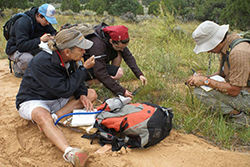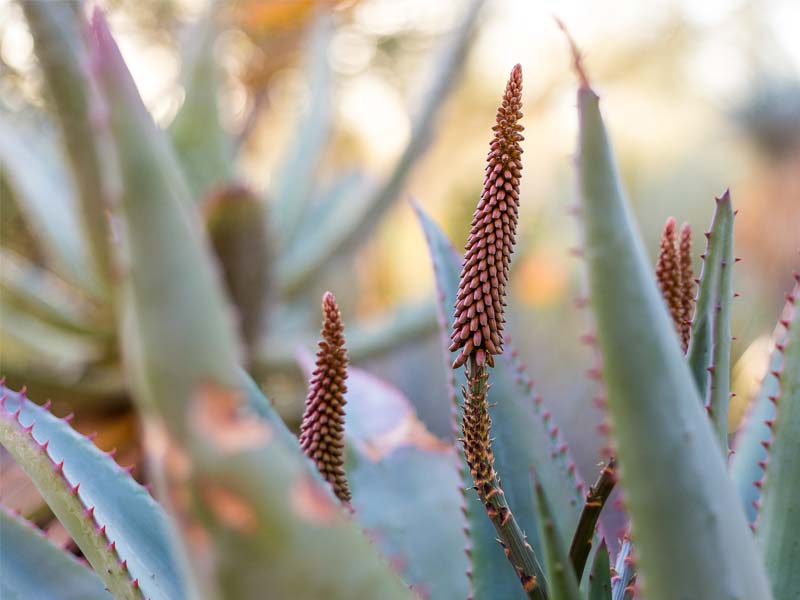Having the opportunity to name a plant is highly regarded in the plant field. Plants are still beingdiscovered all over the world, including in Arizona. The Garden’s own Wendy Hodgson, senior research botanist and herbarium curator, has discovered and named eight new species throughout her career.
 “Wanting to have the opportunity to name a plant is not so much an ego thing; it has more to do with being interested in diversity and wanting to know how diverse our ecosystem is. If there is a new plant at this stage of the game, generally it’s a rare plant,” says Hodgson.
“Wanting to have the opportunity to name a plant is not so much an ego thing; it has more to do with being interested in diversity and wanting to know how diverse our ecosystem is. If there is a new plant at this stage of the game, generally it’s a rare plant,” says Hodgson.
While there are specific rules set by the International Code of Nomenclature for algae, fungi and plants that need to be followed, it is up to the discretion of the person who discovered the plant to decide on the name. Best practice states that a name should be descriptive and is commonly identified by certain characteristic of the plant or the area it was discovered. Even when following best practices, plant names have been known to be interesting and entertaining.
For example, Spongiforma squarepantsii is a Latinization of the well-known cartoon character SpongeBob SquarePants. The plant is a species of fungus that produces sponge-like fruit and the scientist who discovered it describes the surface of the plant as “somewhat resembling a seafloor covered with tube sponges, reminiscent of the fictitious home of SpongeBob.” 
Naming a plant starts with the collection process. When a new species is thought to have been discovered, specific pieces of the plant must be collected:
- Flowering material
- Flowers and fruits if both are available
- Leaves, stems and roots
- Measurements and photographs of the plant, including leaves, flowers and fruit
All of these components have to be collected at the same time and will eventually create the type specimen if it is determined to be a new species.
“A type specimen is a preserved specimen designated as a permanent reference for a new species, new genus or some other taxon. The type specimen must be deposited into an active and recognized herbarium before it can be submitted as a new species,” says Hodgson.
After collecting the plant material, it is then compared to other plants in the family. Specimens can be requested from other herbaria to compare. Consistently different characteristics need to be determined, and differences that are less environmentally based and more genetic based are important. Doing molecular (DNA) and cytological (chromosome number and behavior) analyses of the plant are usually extremely helpful, but not necessary in determining if it is a new species.
Once enough differences are determined to prove it is a new species, the next step is to name it and submit it to a peer-reviewed scientific journal. Each journal has a specific format required, but most include:
- An abstract
- History of the plant and the proposed name
- Distinguishing characteristics
- Designation of the type specimen
- List of plants referenced during the process
- Key or chart showing how characteristics compare to others in the family
- Illustrations
The submission is reviewed and either approved or denied. Reasons for being denied can include:
- Not believing it is a new plant
- Not enough research was done
- More information is needed in a particular area
After addressing reviewers concerns, the plant can be resubmitted. Once it is published, that plant name is there forever, even if disagreements arise. If it is later determined to not be a new species, that name will become a synonym for the original plant.
“It’s fun to name plants, especially in areas like Arizona, where there is a misconception that every plant has already been identified. And we are going to keep finding new species in Arizona as the molecular and genetic testing abilities become more advanced,” says Hodgson. “There are several reasons we find new plants, including the fact that they just haven’t been found yet, were overlooked and were thought to be a previously described species that only now, with more advanced taxonomic tools can we test our intuition and prove or disapprove our theories.”
